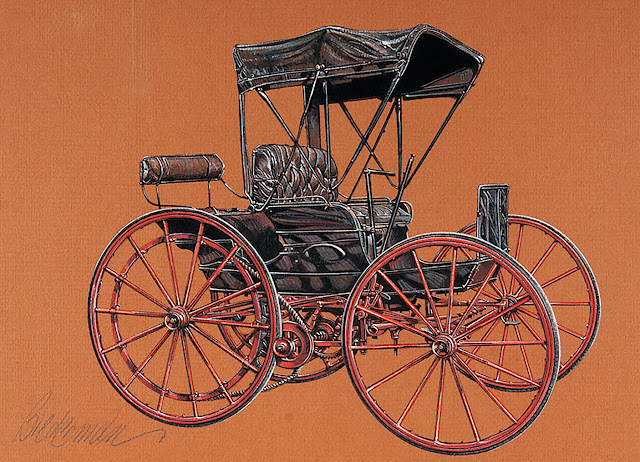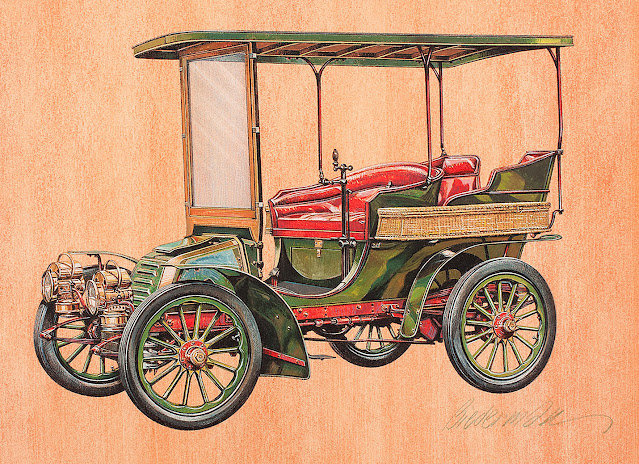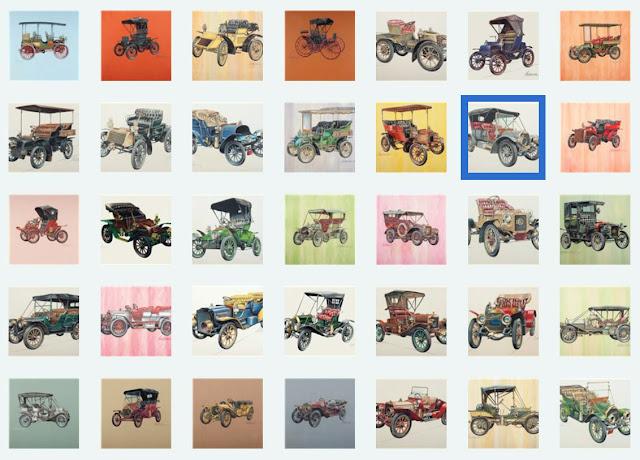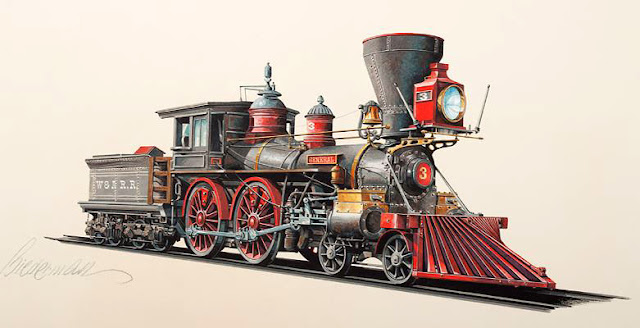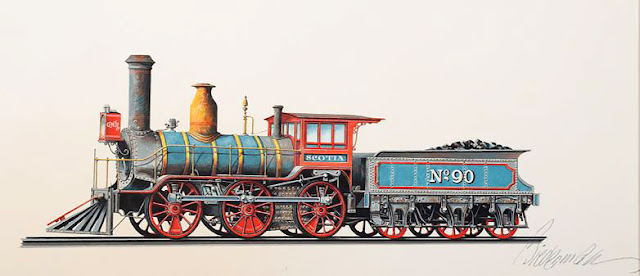Born in 1913, Jerome Biederman was a nationally recognized illustrator of transportation. Whether his subject was an automobile, aircraft, or locomotive, his renderings were technically accurate and highly detailed. His medium of choice was tempera paint on illustration board.
After graduating from the American Academy of Art in Chicago, he entered the advertising world where he did almost everything except illustration. By 1940, he chose to leave the corporate advertising world and return to the creative atmosphere of a studio.
After graduating from the American Academy of Art in Chicago, he entered the advertising world where he did almost everything except illustration. By 1940, he chose to leave the corporate advertising world and return to the creative atmosphere of a studio.
He was working for the McCleery-Cumming Corporation in 1956, a calendar company, who retained the artist to create six paintings for each of their 1958 automobile calendars.
He painted for the calendar company for 36 years, and in the first 31 of those years, 186 automobile paintings were printed without interruption. A total of 444 Biederman transportation paintings were published in McCleery-Cumming calendars by 1993. In addition to the calendars, Mr. Biederman's automotive paintings were featured prominently in Playboy magazine, Automobile Quarterly and Horseless Carriage Gazette.
1893 Mogul Freight
1856 Baltimore and Ohio "William Mason"
1860 Hamilton-Ontario "Scotia"
1859 Philadelphia and Reading "Hiawatha"
1860 Rogers Locomotive Works 4.4.0 freight
1908 Mack Fuel Tank Truck



